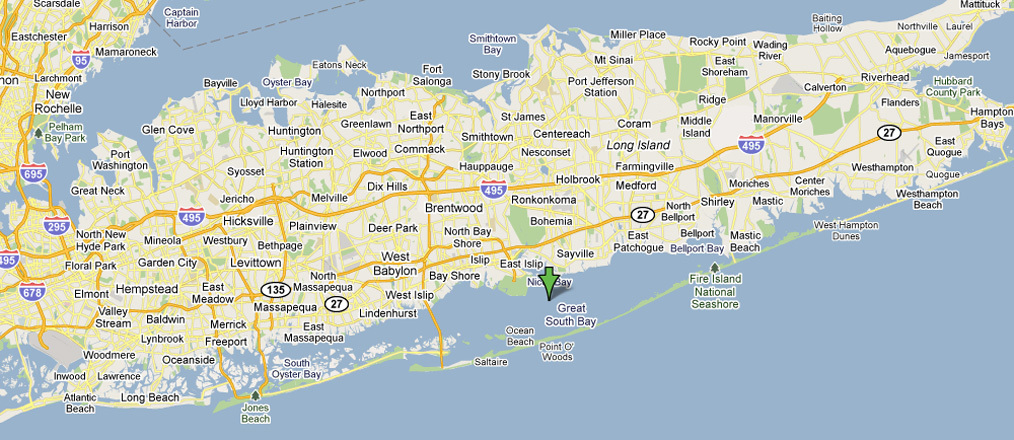Polluted storm water has a devastating effect
The Great South Bay is the body of water situated between Long Island and Fire Island. It is contiguous with South Oyster Bay to the west (ending at a series of small islands in Seaford) and connects through a narrows to Moriches Bay to the east. It is approximately 45 miles long by 3 miles wide with an average depth of 4 feet, 3 inches. That is a lot of water. It is so much water that it’s difficult to imagine that the ecosystem of the bay can be adversely affected by storm-water runoff, but it can.
At one time, New York provided more than half of the nation’s hard clams and the Great South Bay was referred to as the world’s richest clam factory. In 1976 more than 700,000 bushels of clams were harvested from the Bay. In 2002 the harvest was less than 50,000 bushels. Although over-harvesting of clams was partly responsible for a rapid decline in the clam industry, the appearance of Brown Tide in 1985 and a decline in Bay water quality contributed significantly to poor growth and diminished reproduction in the clam population. Brown Tide is the name given to describe the discoloration of Bay waters caused by the overgrowth of a type of algae known as Aureococcus anophagefferens. Studies have shown that pollution carried by storm-water runoff is linked to both poor Bay water quality and Brown Tides.
Another large body of water on Long Island is Peconic Bay. The Peconic Estuary consists of approximately 158,000 acres of surface water. Peconic Bay lies between the North Fork and South Fork of Long Island and is made up of a series of shallow, inter-connecting bays fed by groundwater, creeks and rivers. The estuary and its 340 miles of coastline support a variety of bird and marine life, and are a vital economic, recreational and scenic resource for Long Island.
In 1982, the harvest of 500,000 pounds of bay scallops from the Peconic Estuary accounted for 28 percent of all U.S. commercial landings and had a dockside value of $1.8 million. Since 1985, bay scallop populations have been decimated by repeated blooms of the Brown Tide organism. As in the Great South Bay, pollution in storm water runoff has been implicated in Brown Tides and lower water quality. The scalloping industry in New York has yet to recover from the devastating effects of the brown tide.
What can you do to prevent Brown Tides and improve the water quality of the Bay? First, don’t use storm drains to dispose of trash, lawn clippings, chemical or pet waste. Second, educate yourself about these issues and share your knowledge with others.
To learn more about storm water runoff and its impact on our environment and local economy read my article in next week’s issue of the Herald and visit my web site www.stormdrainproject.webs.com.









